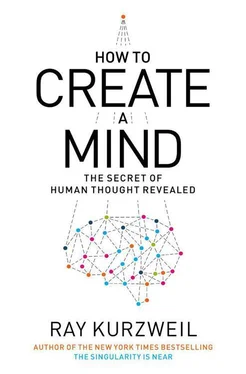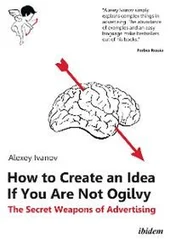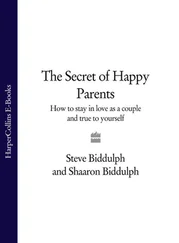The Australian philosopher David Chalmers (born in 1966) has coined the term “the hard problem of consciousness” to describe the difficulty of pinning down this essentially indescribable concept. Sometimes a brief phrase encapsulates an entire school of thought so well that it becomes emblematic (for example, Hannah Arendt’s “the banality of evil”). Chalmers’s famous formulation accomplishes this very well.
When discussing consciousness, it becomes very easy to slip into considering the observable and measurable attributes that we associate with being conscious, but this approach misses the very essence of the idea. I just mentioned the concept of metacognition—the idea of thinking about one’s own thinking—as one such correlate of consciousness. Other observers conflate emotional intelligence or moral intelligence with consciousness. But, again, our ability to express a loving sentiment, to get the joke, or to be sexy are simply types of performances—impressive and intelligent perhaps, but skills that can nonetheless be observed and measured (even if we argue about how to assess them). Figuring out how the brain accomplishes these sorts of tasks and what is going on in the brain when we do them constitutes Chalmers’s “easy” question of consciousness. Of course, the “easy” problem is anything but and represents perhaps the most difficult and important scientific quest of our era. Chalmers’s “hard” question, meanwhile, is so hard that it is essentially ineffable.
In support of this distinction, Chalmers introduces a thought experiment involving what he calls zombies. A zombie is an entity that acts just like a person but simply does not have subjective experience—that is, a zombie is not conscious. Chalmers argues that since we can conceive of zombies, they are at least logically possible. If you were at a cocktail party and there were both “normal” humans and zombies, how would you tell the difference? Perhaps this sounds like a cocktail party you have attended.
Many people answer this question by saying they would interrogate individuals they wished to assess about their emotional reactions to events and ideas. A zombie, they believe, would betray its lack of subjective experience through a deficiency in certain types of emotional responses. But an answer along these lines simply fails to appreciate the assumptions of the thought experiment. If we encountered an unemotional person (such as an individual with certain emotional deficits, as is common in certain types of autism) or an avatar or a robot that was not convincing as an emotional human being, then that entity is not a zombie. Remember: According to Chalmers’s assumption, a zombie is completely normal in his ability to respond, including the ability to react emotionally; he is just lacking subjective experience. The bottom line is that there is no way to identify a zombie, because by definition there is no apparent indication of his zombie nature in his behavior. So is this a distinction without a difference?
Chalmers does not attempt to answer the hard question but does provide some possibilities. One is a form of dualism in which consciousness per se does not exist in the physical world but rather as a separate ontological reality. According to this formulation, what a person does is based on the processes in her brain. Because the brain is causally closed, we can fully explain a person’s actions, including her thoughts, through its processes. Consciousness then exists essentially in another realm, or at least is a property separate from the physical world. This explanation does not permit the mind (that is to say, the conscious property associated with the brain) to causally affect the brain.
Another possibility that Chalmers entertains, which is not logically distinct from his notion of dualism, and is often called panprotopsychism, holds that all physical systems are conscious, albeit a human is more conscious than, say, a light switch. I would certainly agree that a human brain has more to be conscious about than a light switch.
My own view, which is perhaps a subschool of panprotopsychism, is that consciousness is an emergent property of a complex physical system. In this view a dog is also conscious but somewhat less than a human. An ant has some level of consciousness, too, but much less that of a dog. The ant colony, on the other hand, could be considered to have a higher level of consciousness than the individual ant; it is certainly more intelligent than a lone ant. By this reckoning, a computer that is successfully emulating the complexity of a human brain would also have the same emergent consciousness as a human.
Another way to conceptualize the concept of consciousness is as a system that has “qualia.” So what are qualia? One definition of the term is “conscious experiences.” That, however, does not take us very far. Consider this thought experiment: A neuroscientist is completely color-blind—not the sort of color-blind in which one mixes up certain shades of, say, green and red (as I do), but rather a condition in which the afflicted individual lives entirely in a black-and-white world. (In a more extreme version of this scenario, she has grown up in a black-and-white world and has never seen any colors. Bottom line, there is no color in her world.) However, she has extensively studied the physics of color—she is aware that the wavelength of red light is 700 nanometers—as well as the neurological processes of a person who can experience colors normally, and thus knows a great deal about how the brain processes color. She knows more about color than most people. If you wanted to help her out and explain what this actual experience of “red” is like, how would you do it?
Perhaps you would read her a section from the poem “Red” by the Nigerian poet Oluseyi Oluseun:
Red the colour of blood
the symbol of life
Red the colour of danger
the symbol of death
Red the colour of roses
the symbol of beauty
Red the colour of lovers
the symbol of unity
Red the colour of tomato
the symbol of good health
Red the colour of hot fire
the symbol of burning desire
That actually would give her a pretty good idea of some of the associations people have made with red, and may even enable her to hold her own in a conversation about the color. (“Yes, I love the color red, it’s so hot and fiery, so dangerously beautiful…”) If she wanted to, she could probably convince people that she had experienced red, but all the poetry in the world would not actually enable her to have that experience.
Similarly, how would you explain what it feels like to dive into water to someone who has never touched water? We would again be forced to resort to poetry, but there is really no way to impart the experience itself. These experiences are what we refer to as qualia.
Many of the readers of this book have experienced the color red. But how do I know whether your experience of red is not the same experience that I have when I look at blue? We both look at a red object and state assuredly that it is red, but that does not answer the question. I may be experiencing what you experience when you look at blue, but we have both learned to call red things red. We could start swapping poems again, but they would simply reflect the associations that people have made with colors; they do not speak to the actual nature of the qualia. Indeed, congenitally blind people have read a great deal about colors, as such references are replete in literature, and thus they do have some version of an experience of color. How does their experience of red compare with the experience of sighted people? This is really the same question as the one concerning the woman in the black-and-white world. It is remarkable that such common phenomena in our lives are so completely ineffable as to make a simple confirmation, like one that we are experiencing the same qualia, impossible.
Читать дальше












